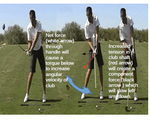titleist981
Active member
- Joined
- Oct 14, 2019
- Messages
- 644
- Reaction score
- 236
I'm missing something here... does power in the golf swing come from turning the hips out of the way and throwing the body and hands at the ball towards the target (per Rory McIlroy). what are other recipes for power and consistency? I seem to be lacking in both,...




